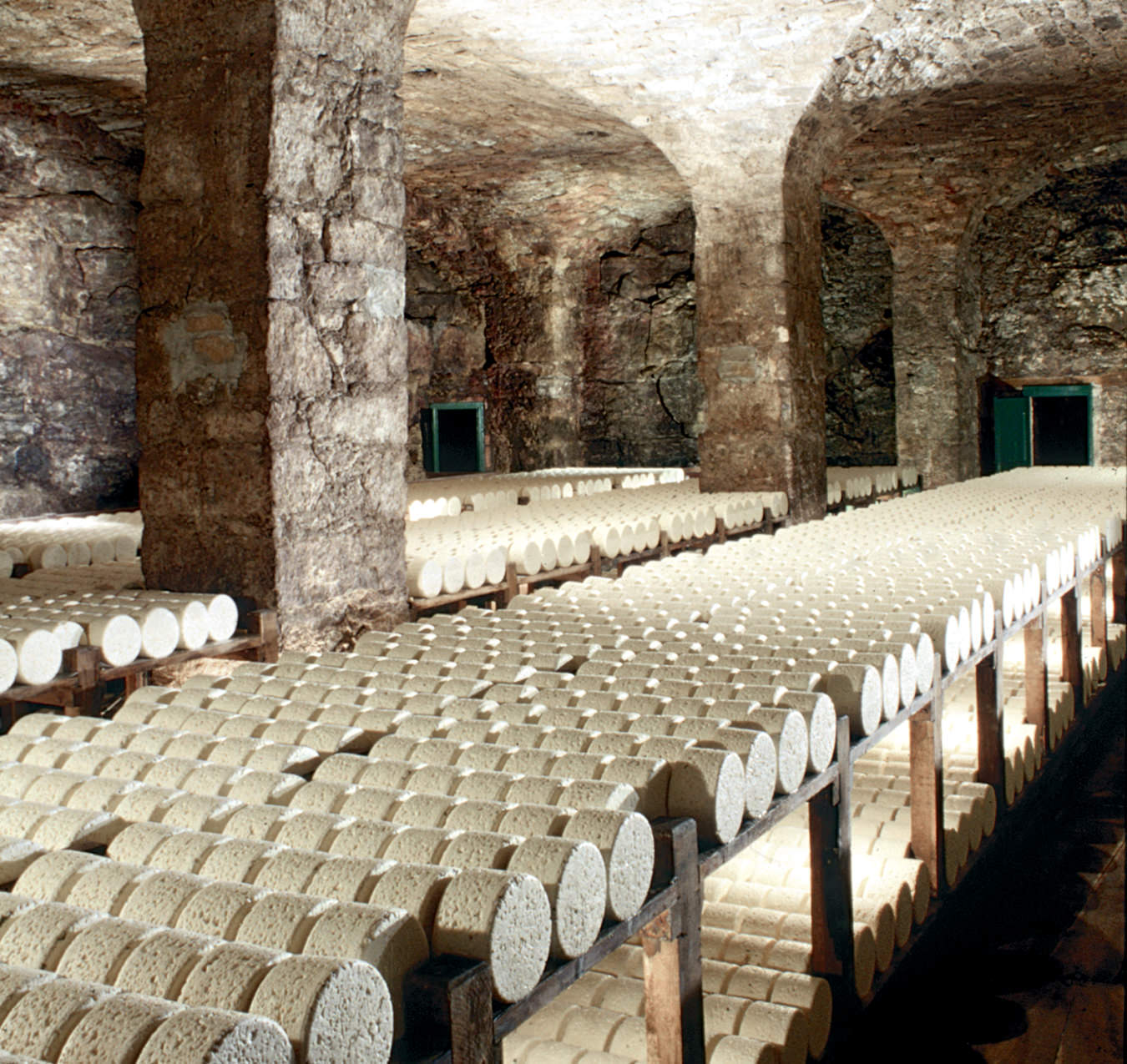Allegedly France’s first restaurant critic, 18th century gastronome Grimod de la Reynière worshiped a certain cheese. “Roquefort,” he wrote, “should be eaten on one’s knees”. Around the same time, Casanova—his position not noted—was using it to seduce. Both had come late to relishing Roquefort’s inky-veined pungent lusciousness. Over one thousand years ago, it so entranced the emperor Charlemagne that he demanded two cartloads annually during Christmas time. The ultimate accolade came in 1925 when it became the first cheese to be granted AOC status. While other blues are made using similar methods, only cheese ripened at the source can be called Roquefort.
Given its fame, the Aveyronnais village of Roquefort-sur-Soulzon (population around 700) is surprisingly modest, drowsing on a side road in a landscape of vertiginous limestone cliffs and somnolent pasturage where Lacaune ewes convert meadows into milk. The craggy scenery provides more than fodder. Many years ago, the collapse of the limestone plateau Combalou in Roquefort-sur-Soulzon created caves with natural chimneys, called fleurines, that function as ventilators today.
Nobody knows who originally had the idea of aging a bacteria-laden cheese in a clammy cellar. Legend says that, long ago, a shepherd picnicking in a cave was distracted by a beautiful woman. Abandoning his lunch, he chased after her, and returned days later to find that nature had transformed the sheep curds into a delicious marbled cheese. While the process is now more controlled, the recipe is still disarmingly simple: raw Lacaune sheep’s milk, Mediterranean sea salt, rennet, and Penicillium roqueforti, a microorganism which is grown on bread in local laboratories. Mix, let curds form, pack into moulds, and pierce with needles (explaining the small straight lines visible in Roquefort) so that the carbon dioxide produced can escape and oxygen can circulate.
Of the seven producers in Roquefort-sur-Soulzon, the largest and oldest is Société, which dates back to 1842 and puts its name to some 3.5 million cheeses a year, about 55 per cent of all production. Its buildings at ground level give no hint of the dank subterranean labyrinth beneath. Société has 50,000 square metres of cellars with the oldest, a soaring cathedral-like space, like a set from Game of Thrones, dating back to the 17th century. With its dripping walls and damp floors, this is a humid world where you can sense nature at work. In the cheese cellars, the temperature is maintained at a balmy 14 degrees. Here, thousands of small wheels rest on their edges on wood shelves prosaically covered with plastic, so that the cheese does not absorb the tannins in the oak. After two to three weeks, trundled from level to level by elevator, they are wrapped in porous foil, and matured between two to -5 degrees for between three months and a year. About three kilos at birth, each wheel of cheese will have lost about 10 per cent of its weight by the time it comes to market.
France consumes around 80 per cent, from the cheese board, évidemment, but also in salads and sauces. At Christmas, a wedge is as key to the table as foie gras, oysters, and the 13 traditional desserts.
Word from an authority in Roquefort-sur-Saulzon is that kitchen foil is best for keeping the cheese in prime condition. Double-wrapped and stored in a plastic container, a wedge lasts up to two months refrigerated, before being brought to room temperature for 40 minutes, and then to the table.
At Société, staff offer samples along with gingerbread. Sweet wines balance Roquefort’s saltiness, as do pears and apples, and, with digestive biscuits and fig jam, it forms a wholly magical trinity. Smooth, rich, salty, and versatile, this is a cheese that encourages foodies to break the mould.










